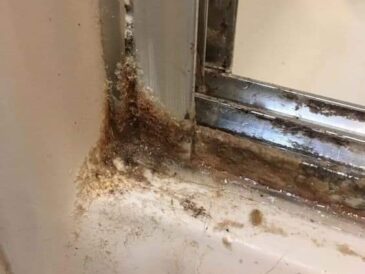Step 1: Assess the Problem
Turn on the water and observe the spray pattern. Are certain holes clogged or is the overall pressure low? This will help determine the level of cleaning required.
Step 2: Clean the Exterior
- Wipe the shower head with a damp cloth to remove surface dirt.
- Use a toothbrush dipped in vinegar to scrub visible mineral deposits around the holes.
Step 3: Use the Vinegar Soak Method
This natural and effective method dissolves mineral deposits without harsh chemicals.
For a Non-Removable Shower Head:
- Fill a plastic bag with white vinegar.
- Submerge the shower head in the vinegar by wrapping the bag around it.
- Secure the bag with a rubber band or zip tie.
- Let it soak for at least 1–2 hours (or overnight for heavy buildup).
For a Removable Shower Head:
- Detach the shower head using a wrench, being careful not to damage the threads.
- Submerge the shower head in a bowl of vinegar.
- Let it soak for the same duration as above.
Step 4: Scrub the Nozzles
- After soaking, use a toothbrush to scrub the nozzles.
- Gently poke each clogged hole with a toothpick or pin to dislodge stubborn debris.
Step 5: Rinse Thoroughly
- Run water through the shower head to flush out any loosened particles.
- Reattach the shower head if it was removed.
Step 6: Test the Water Pressure
Turn on the shower and observe the spray. If water pressure has improved, your work is done. If not, repeat the process or proceed to deeper cleaning.
Bonus Tips for Persistent Clogs
- Use Baking Soda and Vinegar:
- Make a paste with baking soda and water.
- Apply it to the shower head before soaking it in vinegar for a powerful fizzing action that breaks down deposits.
- Disassemble the Shower Head:
- For severe clogs, take apart the shower head (if possible).
- Clean each piece thoroughly and rinse before reassembling.
- Replace the Shower Head:
- If cleaning doesn’t restore the water pressure, it might be time to invest in a new shower head.
Preventing Future Clogs
To keep your shower head in top shape:
- Regular Cleaning: Soak it in vinegar every few months.
- Install a Water Softener: This reduces mineral deposits caused by hard water.
- Run Water Post-Use: Let hot water flow through the shower head for a minute after use to clear any residue.
Conclusion
Unclogging your shower head is a simple yet impactful DIY task that enhances your daily shower experience. By following these easy steps and maintaining your shower head regularly, you’ll enjoy better water pressure and avoid future clogs. With just a little effort, your shower can go from a trickle to a torrent, making every bath rejuvenating and refreshing.
FAQs
1. Can I use lemon juice instead of vinegar?
Yes, lemon juice is a natural alternative for dissolving mineral deposits and leaves a pleasant scent.
2. How often should I clean my shower head?
Every 3–6 months is ideal, but frequency depends on your water hardness and usage.
3. Is it safe to use vinegar on all shower heads?
Vinegar is safe for most shower heads, but check the manufacturer’s instructions for coated or specialty finishes.
4. What if vinegar doesn’t work?
Try commercial descaling products designed for hard water buildup, or consider replacing the shower head.
5. Can clogged shower heads damage plumbing?
No, but reduced water pressure might strain your plumbing system over time. Regular maintenance prevents such issues.




